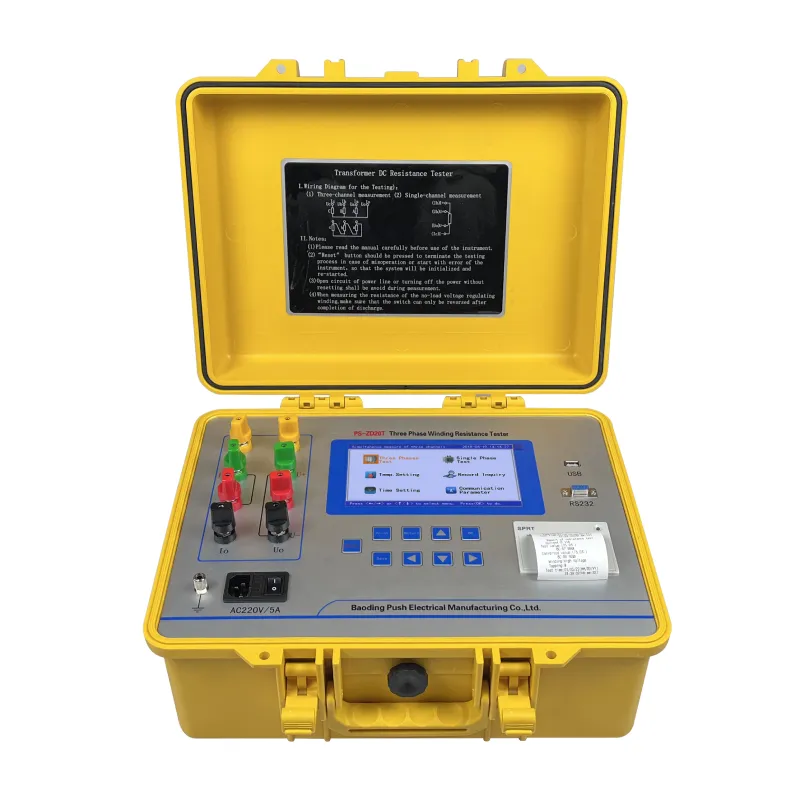 English
English


DGA Insights into Transformer Oil Health Monitoring and Maintenance Strategies
DGA Analysis of Transformer Oil An Essential Tool for Transformer Maintenance
Transformer oil, also known as insulating oil, is a critical component in electrical transformers, providing insulation and cooling to ensure efficient operation. Due to its importance, the analysis of transformer oil has become a fundamental practice in maintaining the health and longevity of transformers. One of the key methods in assessing the condition of transformer oil is Dissolved Gas Analysis (DGA). This article will explore the significance of DGA analysis, the various gases involved, and how it plays a crucial role in preventing transformer failures.
Understanding DGA Analysis
Dissolved Gas Analysis involves the measurement of gases that are dissolved in transformer oil. Under normal operating conditions, only trace amounts of gases are present. However, as the transformer experiences electrical stress, thermal breakdown, or insulation deterioration, gases such as hydrogen (H2), methane (CH4), ethylene (C2H4), acetylene (C2H2), and carbon monoxide (CO) can be generated. DGA helps to identify these gases' concentrations, offering insights into potential problems within the transformer.
Typically, a sample of transformer oil is taken and analyzed using gas chromatography techniques. The results reveal the types and ratios of gases present, which can be indicative of different issues. For instance, high levels of hydrogen might suggest overheating or arcing, while significant amounts of acetylene could indicate severe electrical faults.
The Importance of DGA Analysis
The role of DGA analysis in transformer maintenance cannot be overstated. Transformers are vital components in power systems and any failure can result in significant financial losses, outages, and even safety hazards. Regular monitoring of transformer oil through DGA provides several advantages
1. Early Detection of Faults By identifying abnormal gas levels, maintenance teams can detect issues before they escalate into major failures. This proactive approach helps in scheduling repairs or replacements at an appropriate time, thus minimizing unplanned outages.
dga analysis of transformer oil

2. Monitoring Transformer Health Over time, the composition of gases in transformer oil changes. DGA analysis can establish baseline levels for normal operation, allowing any deviations to be noted and acted upon swiftly. This monitoring facilitates better planning and budgeting for maintenance activities.
3. Improving Transformer Lifespan Regular DGA testing contributes to the overall health of the transformer by highlighting minor issues that can be corrected. By addressing these concerns early, the lifespan of the transformer can be extended, thus optimizing the investment made in the equipment.
4. Regulatory Compliance Various industries have established guidelines and regulations regarding the maintenance of transformers. Regular DGA analysis helps organizations comply with these standards, reducing liability and ensuring safety.
Key Gases and Their Implications
Understanding the specific gases and their concentrations in transformer oil can provide insights into particular faults
- Hydrogen (H2) Elevated hydrogen levels often indicate overheating and incipient electrical faults. - Methane (CH4) Its presence might suggest a developing fault but requires correlation with other gases to ascertain more about the condition. - Ethylene (C2H4) High levels may indicate overheating and plasticization of insulating materials. - Acetylene (C2H2) Excessive amounts are typically associated with serious discharges, such as arcing. - Carbon Monoxide (CO) An increase in CO can suggest thermal degradation of the insulation or other materials in the transformer.
Conclusion
DGA analysis of transformer oil is an invaluable diagnostic tool in the electrical utility industry. By regularly conducting these analyses, organizations can improve their reliability, reduce maintenance costs, and prevent catastrophic failures. As technology advances, the techniques for DGA are becoming more sophisticated, allowing for even better predictive maintenance capabilities. In summary, investing in DGA is crucial for the effective management and sustainability of transformer systems, ensuring that they operate safely and efficiently in support of our electrical infrastructure.
-
Differences between open cup flash point tester and closed cup flash point testerNewsOct.31,2024
-
The Reliable Load Tap ChangerNewsOct.23,2024
-
The Essential Guide to Hipot TestersNewsOct.23,2024
-
The Digital Insulation TesterNewsOct.23,2024
-
The Best Earth Loop Impedance Tester for SaleNewsOct.23,2024
-
Tan Delta Tester--The Essential Tool for Electrical Insulation TestingNewsOct.23,2024





